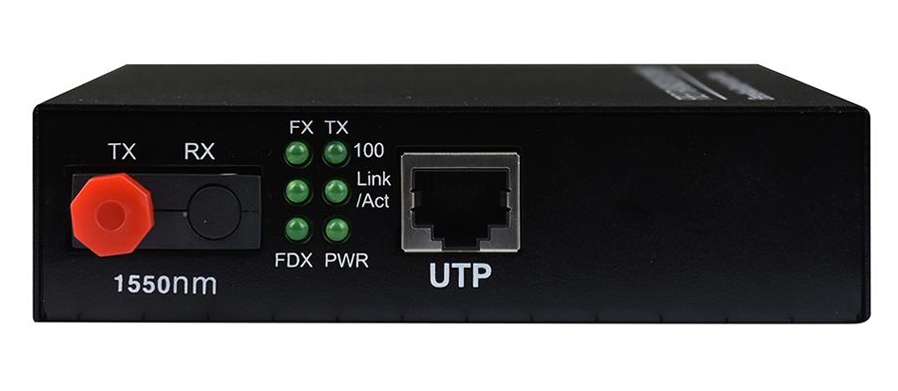The fiber media converter can realize the conversion of two different transmission media, network cable and optical fiber, and support 10/100/1000Mbps network bandwidth. Media converter can be used in pairs or with other equipment, and can be widely used in security monitoring, FTTH, and other places. So, what are the common faults of fiber media converters? Let’s take a look.
1. If the Power light is not on, it is mostly caused by a power failure.
2. If the Link light does not light up, there may be the following situations:
(1) Check whether the optical fiber line is broken;
(2) Check whether the loss of the optical fiber line is too large and exceeds the receiving range of the equipment;
(3) Check whether the optical fiber interface is connected correctly, the local TX is connected with the remote RX, and the remote TX is connected with the local RX;
(4) Check whether the optical fiber connector is well inserted into the device interface, whether the jumper type matches the device interface, whether the device type matches the optical fiber, and whether the device transmission length matches the distance.
3. The circuit Link light does not light up. The faults may be as follows:
(1) Check whether the network cable is broken.
(2) Check whether the connection type matches: the network card and routers and other devices use crossover cables, and switches, hubs, and other devices use straight-through cables. Check if the device transfer rate matches.
4. Serious network packet loss may cause the following faults:
(1) The electrical port of the media converter does not match the interface of the network device, or the duplex mode of the device interface at both ends.
(2) Check whether there is any problem with the twisted pair and the RJ-45 head.
(3) The optical fiber connection problem, whether the jumper is aligned with the equipment interface, whether the pigtail matches the jumper and the coupler type, etc.
5. On and off phenomenon
(1) It may be that the attenuation of the optical path is too large. At this time, an optical power meter can be used to measure the optical power of the receiving end. If it is near the receiving sensitivity range, it can be basically judged as an optical path failure within the range of 1-2dB.
(2) It may be that the switch connected to the media converter is faulty. At this time, replace the switch with a PC, that is, the two fiber media converters are directly connected to the PC, and the two ends are pinged. If there is no on-off phenomenon, it can be basically judged as a switch failure
(3) It may be the failure of the fiber media converter. At this time, you can connect both ends of the media converter to the PC (not through the switch). After the two ends have no problem with PING, transfer a large file (100M) or more from one end to the other. Observe its speed, if the speed is very slow (files below 200M are transmitted for more than 15 minutes), it can be basically judged that the media converter is faulty.
6. After the fiber media converter is connected, the two ends cannot communicate
(1) The optical fibers are reversed, and the optical fibers connected to TX and RX are reversed.
(2) The connection between the RJ45 interface and the external device is incorrect (pay attention to the straight-through and splicing) and the optical fiber interface (ceramic ferrule) does not match. This fault is mainly reflected in the 100M fiber media converter with optoelectronic mutual control function, such as the APC ferrule. If the pigtail is connected to the media converter of the PC ferrule, it will not be able to communicate normally, but it will have no effect if it is connected to the non-optical mutual control fiber media converter.
The above is the introduction of some faults of the fiber media converter, welcome to consult for more information.



